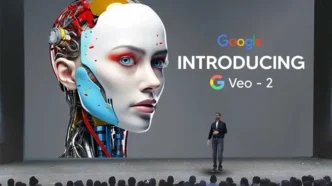Google is launching its Veo 2 video-generating AI model for users subscribed to Gemini Advanced, the company’s premium AI plan.
This move comes as Google aims to compete with OpenAI’s Sora video generation platform. While the synthetic media sector becomes more competitive. Recently, Runway, a major player in synthetic media, introduced the fourth version of its video generator and secured over $300 million in new funding.
Starting on Tuesday, Gemini Advanced subscribers will have the option to choose Veo 2 from the model menu within Google’s Gemini apps. This allows users to create eight-second video clips in 720p resolution with a 16:9 aspect ratio. These videos can then be uploaded to platforms like TikTok and YouTube through Gemini’s share button. Or downloaded as MP4 files with Google’s SynthID watermark.
There are restrictions on how many videos users can create each month. And the Google Workspace business and education plans are not currently supported, the company notes.
In addition, Google is integrating Veo 2 with Whisk. An experimental feature in Google Labs, which enables users to create images with Gemini. Whisk Animate, a new tool, allows users to transform their generated images into eight-second videos powered by Veo 2. Google Labs is available through the company’s $20-per-month Google One AI Premium subscription.
Although Google’s current applications of Veo 2 may appear basic, Demis Hassabis, CEO of Google DeepMind, mentioned that the company plans to merge Gemini’s AI models with Veo 2 in the future to enhance the AI’s understanding of the physical world.
Meanwhile, many artists and creators express concern about video-generating technologies like Veo 2. Which they believe could disrupt entire creative sectors. A study from the Animation Guild, commissioned in 2024, predicts that over 100,000 jobs in film, television, and animation in the U.S. will be affected by AI by 2026.













